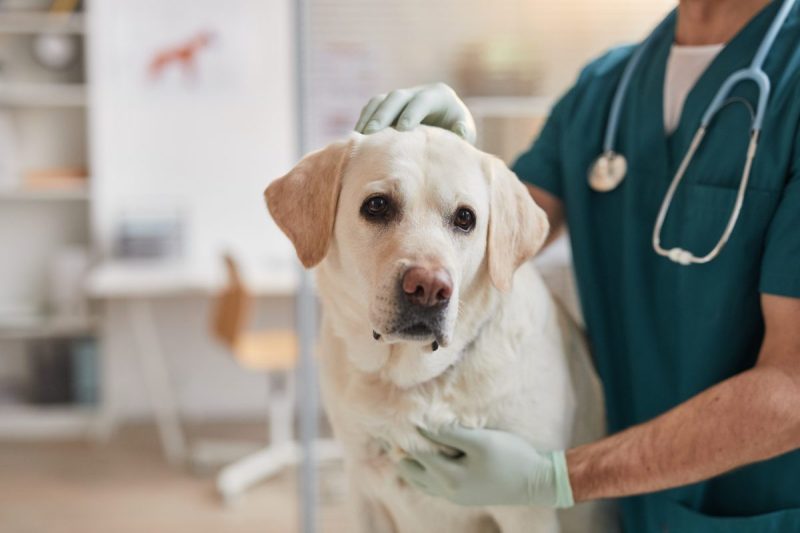Selegiline is an FDA-approved drug used to treat cognitive dysfunction syndrome (CDS) — or dementia — and, occasionally, pituitary-dependent hyperadrenocorticism in dogs. Also known as L-deprenyl, the medication belongs to a class of drugs known as monoamine oxidase inhibitors (MAOIs). It was originally developed as a treatment for Parkinson’s disease in humans and has proven to be beneficial for dogs suffering from various age-related conditions. Selegiline is sold under several brand names, including Anipryl®, Eldepryl®, Zelapar®, and Selgian®.
Here’s what you should know about selegiline’s uses, dosage, and side effects for dogs.
Uses of selegiline for dogs
Selegiline is commonly prescribed for two main conditions in dogs:
- Cognitive Dysfunction Syndrome (CDS): Similar to Alzheimer’s disease or dementia in humans, CDS affects older dogs, causing memory loss, disorientation, and changes in behavior. Selegiline has been shown to improve cognitive function and quality of life in dogs with CDS.
- Pituitary-Dependent Hyperadrenocorticism (PDH): Also known as Cushing’s disease, PDH is a condition in which the pituitary gland produces excessive amounts of adrenocorticotropic hormone (ACTH), leading to overproduction of cortisol by the adrenal glands. Selegiline can help manage the symptoms of PDH by modulating the dopaminergic system, although it is not the first-line treatment for this condition.
Dosage of selegiline for dogs
The following is a guideline for the typical use of the drug in dogs and must not replace your vet’s advice for your individual pet.
The dosage of selegiline will vary based on your dog’s weight and the condition being treated. Generally, the starting dose is 0.25 to 0.5 mg per pound (0.5 to 1 mg/kg). Selegiline is available in tablet form and is typically administered once a day, ideally in the morning. It can be given with or without food. However, if your dog experiences digestive issues when taking the medication on an empty stomach, try offering it with a small meal.
Under certain conditions, your veterinarian might prescribe a compounded formulation of selegiline. These specially formulated medications are recommended when your pet’s health issues cannot be adequately managed by FDA-approved medications. This could be due to difficulties your pet has with swallowing pills, the unavailability of the required dosage strength, or an allergy to an ingredient in the FDA-approved drug. It’s important to note that compounded medications are not FDA-approved. Instead, they are custom-made by either a veterinarian or a licensed pharmacist to meet the specific needs of your pet.
In terms of how long it takes for Anipryl® to work, it depends on several factors such as your dog’s overall health, the severity of symptoms, and the dosage administered. In most cases, you may start to notice an improvement in symptoms within four weeks of starting selegiline treatment. However, for full therapeutic effects, it can take up to several months. Veterinarians typically recommend a trial period of at least eight to 12 weeks to adequately assess the drug’s effectiveness for your dog. During this period, it is essential to closely monitor your dog’s behavior and report any changes to your vet.
Side effects of selegiline for dogs
While selegiline is generally well-tolerated, it can cause side effects in some dogs. Common side effects include:
- Vomiting
- Diarrhea
- Restlessness
- Loss of appetite
- Lethargy
- Itching
- Dizziness
- Increased salivation
It is important to note that selegiline should not be used in dogs who are allergic to it or those with specific health conditions like severe liver or kidney disease. It is also contraindicated in dogs who are taking other MAOIs, selective serotonin reuptake inhibitors (SSRIs), tricyclic antidepressants, and certain opioids. Before starting treatment, always inform your vet about any other drugs or supplements your dog is taking. Some drugs that may interact with selegiline are:
- Acepromazine
- Amitraz (used in some flea/tick preventatives)
- Amitriptyline
- Buprenorphine
- Butorphanol
- Chlorpromazine
- Clomipramine
- Clonidine
- Fluoxetine
- Metoclopramide
- Morphine
- Paroxetine
- Phenylpropanolamine
- Trazodone
Remember to store selegiline tablets at room temperature (68-77°F) in a dry place and away from direct sunlight. Always refer to the drug label for precise storage instructions.
If you miss giving a dose of selegiline to your dog, administer the missed dose as soon as you remember, unless it is almost time for the next scheduled dose. In that case, skip the missed dose entirely and resume the regular dosing schedule. Do not double up on doses to compensate for the missed one, as this could lead to an overdose and potential side effects. If you are unsure about what to do or if your dog exhibits any unusual symptoms, consult your veterinarian for specific guidance.

